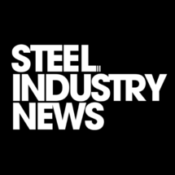The US construction industry is entering a period of profound uncertainty in 2025, shaped by the far-reaching impact of new tariffs, persistent inflation, and a complex interplay of sectoral strengths and weaknesses. As the industry grapples with these headwinds, stakeholders from developers and contractors to suppliers and policymakers must adapt to a landscape where the rules of the game are rapidly changing. This article explores how these forces are reshaping the market, with a particular focus on the effects of the Trump administration’s 2025 tariffs, the evolving housing and nonresidential sectors, and the crucial role of steel in the construction supply chain.
Trump’s 2025 Steel Tariffs: Reshaping Construction Economics
In February 2025, the US government enacted sweeping 25% tariffs on all imported steel and aluminum, removing previous exemptions and product-specific exclusions. This policy shift has had an immediate and dramatic effect on construction costs, as the industry relies heavily on these materials for everything from reinforcing bars to structural frames. The tariffs have impacted an estimated $18.7 billion in annual construction steel imports, sending rebar prices soaring by more than 26% to $1,240 per ton. This alone has added over $14,000 to the cost of building a typical single-family home.
Domestic steel producers have responded by ramping up output, with production rising 8% year-to-date. However, this increase has not been enough to offset the loss of imports, and fabrication bottlenecks have become a significant issue. Many fabricators report delays and cancellations as they struggle to secure affordable raw materials, with lead times for architectural metals stretching to 14–18 weeks. This has forced some developers to redesign projects or accept higher costs, fundamentally altering the calculus of construction planning. As Sarah Martin from Dodge Construction Network notes, “Tariffs have altered planning calculus—developers now factor 15–20% material cost contingencies versus 5% pre-2025.”
Residential Construction: Fragile Gains Amid Policy Shifts
The residential construction sector is feeling the strain of these material cost increases, compounded by high interest rates and ongoing regulatory uncertainty. The National Association of Home Builders’ Housing Market Index (HMI) for April 2025 came in at 40, a slight improvement from March but still well below the 51 recorded in April 2024. Any reading below 50 signals pessimism among builders, and the current figure reflects a market weighed down by rising costs, labor volatility, and consumer hesitancy.
Housing starts in March 2025 dropped sharply to a seasonally adjusted annual rate of 1.324 million, down 11.4% from February, though still up 1.9% from the previous year. This year-over-year gain breaks a string of five consecutive declines, but the underlying momentum remains weak. Single-family starts were hit hardest, falling 14.2% from February and nearly 10% from the previous year. Permits, which serve as a leading indicator for future construction, ticked up slightly to 1.482 million but continued their year-over-year decline for the seventh straight month.
Builders are increasingly cautious, with 68% reporting project delays due to supplier renegotiations triggered by tariffs. Many are postponing starts until later in the year, hoping for some relief in material prices or regulatory clarity. The squeeze is particularly acute for entry-level homes, where the added costs from tariffs and elevated mortgage rates have rendered many projects financially unviable. While multi-family permits have seen a modest uptick, driven by incentives for high-density development, the overall picture is one of hesitation and uncertainty.
Nonresidential Sector: Data Centers Defy Broader Slump
The nonresidential construction sector presents a more nuanced picture, with significant divergence between subsectors. The Dodge Momentum Index, a leading indicator of nonresidential building planning, fell 6.9% in March to 205.6, reflecting a broad slowdown in project planning. Commercial construction has been particularly hard hit, with warehouse planning down 11% month-over-month and retail storefronts dropping 14% as consumer spending weakens. Institutional construction is also under pressure, with healthcare planning declining for the first time since 2021 and education projects falling as states redirect funds.
However, not all is bleak. Data center construction remains a rare bright spot, with planning activity up 23% year-over-year and now accounting for a quarter of all commercial planning. Large-scale projects like the Bessemer, Alabama data center and the Ontario Convention Center expansion are moving forward, buoyed by demand for digital infrastructure and government incentives. Government facilities have also seen a modest increase in planning, reflecting a post-pandemic push to modernize public buildings and comply with new workplace mandates.
Despite these pockets of resilience, the overall trend is negative. The American Institute of Architects’ Billings Index registered a reading of 45.5 in February, marking the fourteenth consecutive month of contraction. Regional disparities are evident, with the Northeast experiencing the highest rate of project cancellations and the West faring slightly better due to data center demand. The gap between project inquiries and signed contracts has widened to nearly seven months, indicating a market where uncertainty and risk aversion dominate decision-making.
Steel Markets: Domestic Boom, Fabrication Bust
The steel market is at the heart of the construction industry’s current challenges. While domestic production has increased to 94 million tons in response to tariffs, fabrication capacity has actually declined, with many firms unable to absorb the higher costs or pass them on to customers. This has led to a mismatch between raw material availability and finished product supply, with warehouse lead times tripling from three to nine weeks. Nearly half of fabricators report order cancellations, and the industry is grappling with $4.2 billion in stranded inventory as projects are delayed or abandoned.
This supply chain disruption has ripple effects across all construction segments. The increased cost and scarcity of steel products have forced some developers to redesign projects, substitute materials, or delay starts. The impact is particularly severe for large, steel-intensive projects like warehouses, manufacturing plants, and infrastructure upgrades. Even sectors less reliant on steel, such as residential construction, are feeling the pinch as higher costs for fasteners, HVAC systems, and other components work their way through the supply chain.
HVAC & Water Heaters: Bright Spot in the Storm
Amid these challenges, there are some areas of growth. The market for heat pumps and energy-efficient water heaters has surged, with shipments of heat pumps rising 8% quarter-over-quarter to 4.1 million units. This growth is driven by a combination of federal tax credits, state-level building code changes, and exemptions from the new tariffs for ENERGY STAR-certified products. In contrast, traditional HVAC shipments have declined by 11% year-over-year, highlighting a significant shift in consumer and builder preferences toward more sustainable technologies.
This trend is expected to continue as more states adopt “cold climate” heat pump standards and as the federal government continues to incentivize energy efficiency. For manufacturers and suppliers in this segment, the current environment presents an opportunity to capture market share and drive innovation, even as other parts of the construction industry struggle.
2025–2026 Outlook: Navigating Uncertain Waters
Looking ahead, the outlook for US construction is highly contingent on macroeconomic and policy developments. In a baseline scenario, the Federal Reserve could cut rates by 50 basis points by the end of 2025, providing some relief to borrowers and potentially stabilizing construction spending at a modest 0.8% annual growth. However, if inflation remains stubborn and rates stay elevated, the risk of a recession looms large. In this case, GDP could contract in the third quarter, nonresidential starts could plunge by nearly 20%, and the industry could shed hundreds of thousands of jobs.
There is also a more optimistic scenario in which bipartisan action provides targeted tariff relief and new infrastructure spending is unlocked, allowing housing starts to rebound and nonresidential construction to recover. However, this outcome appears less likely given the current political climate and the entrenched nature of trade policy debates.
Strategic Imperatives for Survival
In this environment, construction firms are adopting a range of strategies to manage risk and maintain competitiveness. Many are localizing their supply chains, with nearly three-quarters now mandating domestic sourcing for structural steel and other key materials. Regional material hubs are being established to reduce lead times and buffer against supply shocks. Contract innovation is also on the rise, with nearly 90% of new agreements including tariff escalation clauses and a growing shift toward integrated project delivery models that share risk among stakeholders.
Productivity improvements are another area of focus. Firms are investing in AI-driven estimating tools to better manage volatile pricing and adopting modular construction techniques to reduce labor demands and accelerate project timelines. The adoption of modular methods has more than doubled in the past two years, reaching 14% market share in 2025.
Conclusion
The US construction industry in 2025 stands at a crossroads, facing unprecedented challenges from new tariffs, inflation, and shifting demand patterns. The imposition of universal steel and aluminum tariffs has fundamentally altered the economics of building, driving up costs, straining supply chains, and forcing a rethink of project planning and delivery. Residential construction is struggling under the weight of higher prices and tighter financing, while nonresidential sectors face divergent fortunes, with data centers and government projects offering rare bright spots amid a broader slowdown.
Steel markets exemplify the industry’s current predicament, with domestic production up but fabrication capacity lagging and supply chain bottlenecks causing widespread delays and cancellations. At the same time, the shift toward energy-efficient HVAC and water heating systems demonstrates that innovation and adaptation are possible, even in a challenging environment.
Looking ahead, the industry’s trajectory will depend on the interplay of monetary policy, trade negotiations, and sectoral innovation. Firms that localize supply chains, embrace contract flexibility, and invest in productivity will be best positioned to weather the storm. Yet, the risk of a broader downturn or recession remains real, and stakeholders must remain vigilant and adaptable as the landscape continues to evolve. The coming months will be critical in determining whether the industry can stabilize and return to growth or whether deeper challenges lie ahead.
Check out some of our other recent articles on the subject:
- Women of Steel: The Evolution of Women Leadership in The Steel Industry
- Nucor Raises Prices: How Steel Tariffs Are Shaping the Market
- Nucor Cyberattack 2025 Update: Data Breach Confirmed in Latest SEC Filing
- Nippon Steel Acquires U.S. Steel
- Cleveland Cliffs Raises Prices as 50% Tariffs Reshape Steel Market Dynamics
Be sure to subscribe to the FREE Steel Industry Email Newsletter to get the latest steel news delivered straight to your inbox!
Whether you choose our free subscription or upgrade to the premium version, your support helps us cover operational costs and continue providing the latest Steel Industry News at no charge. Stay informed with timely insights and help sustain independent steel industry news by joining today.









